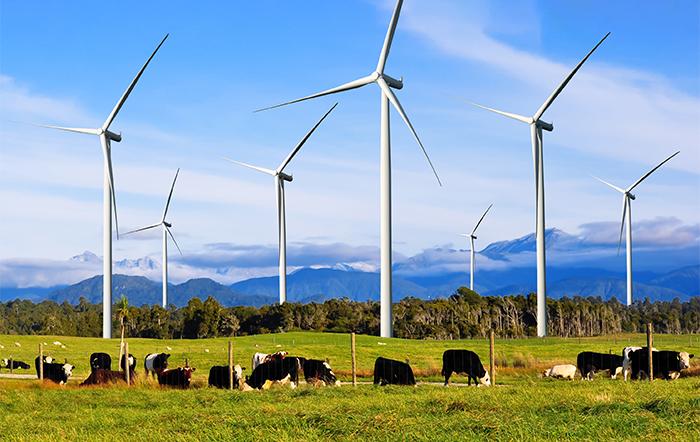Significant fall in cost of financing renewable energy projects

Cost of financing coal power stations has increased by 56% over the same 10 year period, little change in oil and gas financing.
New research from the Smith School's Sustainable Finance Programme tracks how the financing costs for energy projects, measured through loan spreads, have changed over the past 20 years and finds that financial institutions are viewing renewables as less risky and coal as more so. Oil and gas financing costs have exhibited significantly less change.
When comparing 2007-10 with 2017-20 renewables have seen their loan spreads fall by an average of 12% for onshore wind and 24% for offshore wind. This has accelerated since 2015 as renewables deployment has increased, with solar PV, onshore wind, and offshore wind financing costs falling by 20%, 15% and 33% (comparing 2010-14 with 2015-20).
The authors also observe regional differences. Over this time period, there was a 39% reduction in financing costs for offshore wind in Europe; 41%, 14%, and 11% reductions for onshore wind in Australia, North America, and Europe; and 32% and 27% reductions for solar PV in North America and Europe.
Loan spreads are the interest rate charged by banks to reflect the riskiness of the company or project that is being lent to. Banks apply a higher spread to riskier loans, as there is a greater probability that the borrower will default and not pay them back. Therefore, a decrease in loan spreads shows an increase in creditworthiness, which reduces the costs for companies to finance their operations or invest in new projects.
In contrast to renewables, comparing 2007-10 with 2017-20, coal power stations and coal mines have seen their loan spreads increase sharply, at 38% and 54% respectively. This trend holds when comparing 2000-10 with 2011-20, with loan spreads rising 56% and 65% respectively. They find that the financing costs for coal mines increased the most in developed countries, with loan spreads increasing by 80% in North America, 134% in Europe, and 71% in Australia when comparing 2000-10 with 2011-20.
However, in oil and gas, changes to financing costs are much more mixed and have in many cases decelerated over the last decade. For example, while loan spreads for gas-fired power stations rose by 68% from 2000-10 to 2011-20, an increase of just 7% occurred over the past decade whereas coal power rose 38% (comparing 2007-10 with 2017-20). Across regions, there have been large differences: gas-fired power saw a 23% reduction in loan spreads in ASEAN but a 16% increase in North America when comparing 2000-10 with 2011-20. But over the past decade, loan spreads for gas-fired power have decreased by 28% in North America (comparing 2007-10 with 2017-20).
In terms of oil and gas production, while financing costs worsened, loan spreads have been largely stable, rising by only 3% for oil and gas production. In fact, loan spreads for certain sub-sectors fell over this period, such as -41% for offshore oil. This suggests that financial constraints on oil and gas have not materialised in the same manner as coal.
Dr Ben Caldecott, co-author and Director of the Oxford Sustainable Finance Programme and the Lombard Odier Associate Professor of Sustainable Finance at the University of Oxford said, "This is good news for the cost of renewables, as financing costs are a key determinant of overall costs. Falling loan spreads for renewables mean these projects will become even cheaper for ratepayers and taxpayers, which is a good thing for rapidly decarbonising the energy sector."
Dr Xiaoyan Zhou, Lead for Sustainable Investment Performance at the Oxford Sustainable Finance Programme and the lead author said, "If these observed trends continue and we see the cost of capital for oil and gas go the way of coal, this could have very significant implications for the economics of oil and gas projects around the world. This could result in stranded assets and introduce substantial re-financing risks."
Caldecott added, "Climate-related transition risks in the energy sector are sometimes viewed as distant, long-term risks. Our findings support the conclusion that they are being priced today: increasing costs for coal and reducing them for renewables. The challenge is that this isn't happening evenly and certainly isn't occurring at the pace required to tackle climate change. In particular, financing costs will need to rise for oil and gas projects."
Summary
New research from the Sustainable Finance Programme tracks how the financing costs for energy projects, measured through loan spreads, have changed over the past 20 years and finds that financial institutions are viewing renewables as less risky and coal as more so. Oil and gas financing costs have exhibited significantly less change.
